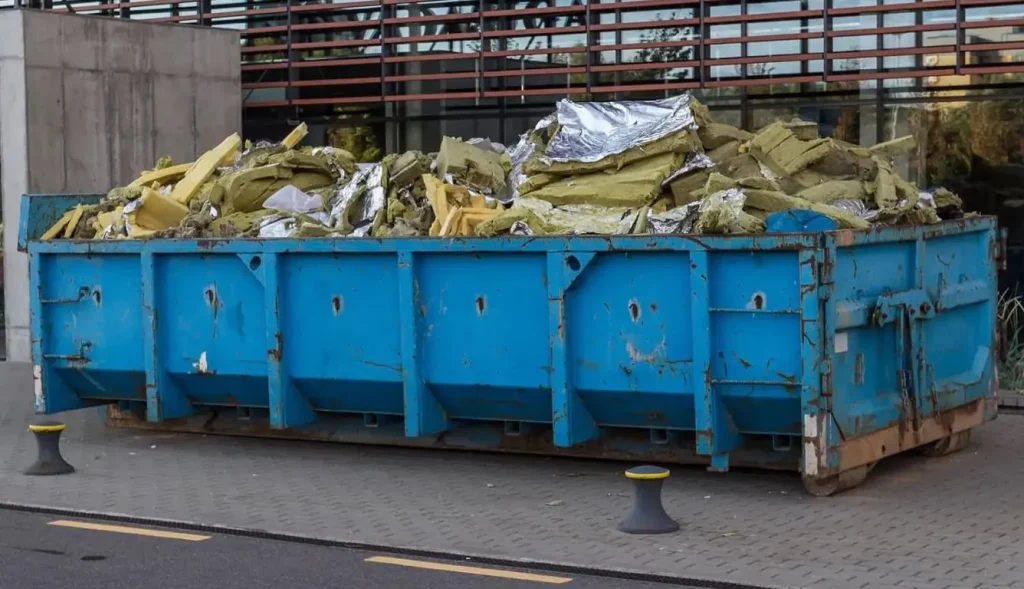Introduction
Disposing of fiberglass insulation is not just about tossing it into the trash. Proper disposal is crucial to avoid health hazards and environmental damage. In this guide, we’ll explore the best methods for disposing of fiberglass insulation, ensuring safety and compliance with regulations.

Understanding Fiberglass Insulation
What is Fiberglass Insulation?
Fiberglass insulation is a common type of insulation made from fine glass fibers. It’s used in residential and commercial buildings to improve energy efficiency by reducing heat transfer.
Common Uses of Fiberglass Insulation
You’ll find fiberglass insulation in walls, attics, basements, and crawl spaces. It’s favored for its affordability, fire resistance, and effectiveness in controlling temperature.
Health Risks of Fiberglass Insulation
Potential Health Hazards
Fiberglass particles can irritate the skin, eyes, and respiratory system. Prolonged exposure can lead to more severe health issues, such as lung disease.
Safety Precautions to Take
Always wear protective clothing, gloves, and a mask when handling fiberglass insulation. Ensure the area is well-ventilated to minimize inhalation of fibers.
Environmental Impact of Fiberglass Insulation
Environmental Concerns
Improper disposal of fiberglass insulation can lead to soil and water contamination. Fiberglass is not biodegradable, so it remains in the environment for a long time.
Importance of Responsible Disposal
Responsible disposal methods help protect the environment and reduce the risk of health problems. Properly handling and disposing of fiberglass insulation can prevent pollution and conserve resources.
Preparing for Disposal
Gathering Necessary Equipment
Before you start, gather all the necessary tools, including plastic bags, tape, and cutting tools. You’ll also need PPE such as gloves, masks, and protective clothing.
Personal Protective Equipment (PPE)
Wearing the right PPE is crucial. Use long sleeves, long pants, gloves, safety glasses, and a mask to protect yourself from fiberglass particles.
Removing Fiberglass Insulation
Step-by-Step Removal Process
- Turn off Power: Ensure all electrical power is off to avoid accidents.
- Ventilate the Area: Open windows and use fans to ventilate the workspace.
- Dampen the Insulation: Lightly mist the insulation with water to reduce dust.
- Cut and Bag: Cut the insulation into manageable pieces and place it in heavy-duty plastic bags.
- Seal the Bags: Use tape to seal the bags tightly to prevent fibers from escaping.
Safety Tips During Removal
- Work in small sections to manage dust.
- Keep the insulation damp to minimize airborne fibers.
- Avoid direct contact with the skin and eyes.
Disposal Options
Landfill Disposal
Most landfills accept fiberglass insulation, but check with your local facility for specific guidelines. Ensure the insulation is properly bagged and sealed.
Recycling Options
Some recycling centers accept fiberglass insulation. This option is more environmentally friendly but may require additional preparation.
Specialized Disposal Services
Consider hiring a specialized disposal service if you have a large amount of insulation or if it’s contaminated. These services handle the material safely and in compliance with regulations.
How to Recycle Fiberglass Insulation
Finding Recycling Centers
Look for recycling centers that accept fiberglass insulation. Contact them to confirm they can process the material.
Preparing Insulation for Recycling
Ensure the insulation is clean and free from contaminants. Bag it properly and label it for recycling.
Legal Considerations
Local Regulations and Guidelines
Check local regulations for disposing of fiberglass insulation. Compliance is crucial to avoid fines and legal issues.
Permits and Documentation
Some areas require permits for large disposal projects. Keep all documentation for reference and compliance.
Alternative Uses for Old Fiberglass Insulation
Repurposing Insulation
Consider repurposing old insulation for use in less critical areas, such as sheds or garages.
Creative DIY Projects
Use leftover insulation in creative DIY projects, like soundproofing materials or insulating pet houses.
Hiring a Professional
When to Consider Professional Help
If the insulation is extensive or potentially contaminated, hire a professional. They have the expertise and equipment to handle disposal safely.
How to Choose a Reputable Disposal Service
Look for licensed and insured services with good reviews. Ask for references and ensure they follow local regulations.
Cost of Disposal
Factors Affecting Disposal Costs
Costs vary based on the amount of insulation, local disposal fees, and whether you hire professionals. Budget accordingly.
Budgeting for Disposal
Plan your budget to include all potential costs, including PPE, tools, and disposal fees. Consider the cost of professional services if needed.
Tips for Safe Handling
Safe Handling Techniques
Handle insulation gently to avoid breaking fibers. Always wear PPE and wash exposed skin thoroughly after handling.
Avoiding Contamination
Keep insulation away from living areas and food. Dispose of it promptly to avoid contamination.
Preventing Future Waste
Sustainable Insulation Options
Consider sustainable alternatives like cellulose or recycled cotton insulation. These options are more eco-friendly.
Best Practices for Future Installations
Use proper installation techniques to minimize waste. Plan your insulation needs accurately to avoid excess.
FAQs
What is fiberglass insulation made of?
Fiberglass insulation is made from fine glass fibers woven together, often combined with a binding agent to hold its shape.
Can fiberglass insulation be recycled?
Yes, fiberglass insulation can be recycled at certain facilities that accept it. Always check with local recycling centers for specific requirements.
How do I know if my insulation contains asbestos?
Asbestos is not typically found in fiberglass insulation. However, older insulation might contain asbestos. If in doubt, have a professional test it.
What should I do if I come into contact with fiberglass?
If you come into contact with fiberglass, wash the affected area with soap and water. Avoid scratching, as this can drive fibers deeper into the skin.
Are there eco-friendly alternatives to fiberglass insulation?
Yes, there are eco-friendly alternatives such as cellulose, recycled cotton, and wool insulation. These materials are sustainable and often easier to dispose of responsibly.
Conclusion
Proper disposal of fiberglass insulation is essential for health and environmental safety. By following these guidelines, you can ensure responsible disposal and reduce the impact on the environment. Remember to wear appropriate PPE, consider recycling options, and adhere to local regulations.


Congratulation!